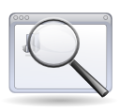MOSEP Module 1/session5
 |
MOSEP ePortfolio Tutorial: Module 1 Selection and Connection of Portfolio Artefacts |
Overview / Introduction - Module 1 Session 1 | Session 2 | Session 3 | Session 4 | Session 5 |
Session 5: Selection of artifacts for different purposes
| The learners should be able to purposefully select and connect artefacts so as to make them most fitting to their specific goals. |
After this session the participant will:
|
Depending on the technical affordances of e-portfolio software being used several actions can be taken to help better classify artefacts. You can:
- assign them to categories
- tag them (assign keywords)
- describe them
- organize them in folders
- create a table of contents
| Activity 1. Selecting the evidence Collect all the artefacts you have created and organize them according to the citeria you personally prefer. These may include:
If not all artefacts are in digital form you should digitalize them. Analyze if all your achievements have been recorded or if there are some supplements to be added.
|
Creating a hierarchy of artifacts
The next important stage of e-portfolio process is creating a hierarchy od artefacts. You should do it too. Try using different criteria for creating hierarchies. Below you will find three exemplary sets of these:
1. Contents:
- Necessary artefacts: to be obligatorily shown within a specific context (both those you already have and ones you must create);
- Useful artefacts: not obligatory but helpful within a given context;
- Possibly useful artefacts: could prove useful or even obligatory if the context was about to change (e.g. applying for a different job).
2. Privacy
- suitable for open publishing (accessible to anyone);
- suitable for restricted publishing (accessible to specific people, e.g. friends or e-portfolio evaluators);
- personal (inaccessible - for any reason - to anyone except for the e-portfolio author).
3. Technology and technical skills:
- Tool being used has the necessary functionalities and full advantage taken of it due to sufficient IT competencies;
- Artefact not "perfect" due to missing tool functionalities;
- Artefact not "perfect" due to insufficient IT competencies;
- Lack of both tool functionalities and IT competencies.
| Selecting and connecting artefacts If you have not yet selected software which you would want to use for creating your e-portfolio then you should do it now. Use this tool to select the appropriate artefacts from the set you collected during the previous Activity. Do not forget about the goals you need/want to achieve and about privacy issues.
Think about the relation between different artefacts and groups of artefacts. Show and describe them. Try to present them in visual form (e.g. through hyperlinks, mind maps or table of contents).
|
| Standarizing the technical parameters. Evaluate collected artefacts on the following criteria: technical quality, resolution, faithfulness of reproduction of real-life stimuli, visual clarity, ease of publishing, ease of reproducing etc. Decide if your technical skills allow you to standarize the resources you have. For example:
|
